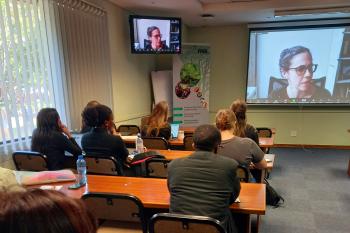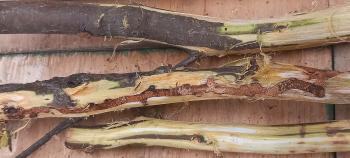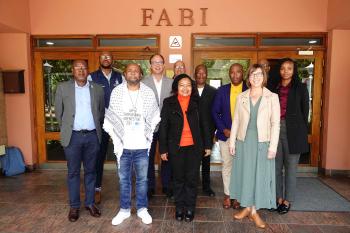The current explosion in next generation biological- and information technologies is disrupting agriculture business globally, opening transformative new opportunities for intensification and diversification in a sustainable manner. Africa is rich in agricultural growth opportunities, from underutilized land, to novel crop diversity, and a rich agricultural tradition. The intersection of these opportunities makes this a key moment for the continent to stimulate economic and social development through accelerated agricultural development.
Africa lacks the capacity and data needed to unlock the opportunity that the era of digital and precision agriculture offers. These opportunities will also need to be connected with a fragmented agricultural community in a way that allows ownership, social development and resilience. At the same time, the intended intensification needs to be mindful of the value of the continents biodiversity and landscapes that provide vital ecosystem services, as well as the threats that it will face from climate change, pests and disease.
With this in mind, a process has been launched to transform the Experimental Farm of the University of Pretoria into a research and development investment platform called Innovation Africa @UP. The core of this development will be agriculture, although transport, health, education and other sectors will also use this platform. Innovation Africa @UP will provide an anchor for the development of a network of like-minded Agricultural Research Hubs that are transformed into ‘digital and precision agriculture research and training hubs’ across the continent, sharing resources, capacity and data. This network can provide a focused investment platform for the future of agriculture on the continent by developing an interface between business, governments, development and research organizations.
Two world leading research institutions will spearhead this initiative, namely the Forestry and Agricultural Biotechnology Institute (FABI; rated second in the world in some research fields) and Future Africa (a global research hub dedicated to transdisciplinary research for innovation on the continent). These institutions are leading research globally in areas such as plant health, plant breeding, genomics, synthetic biology and other relevant next generation biotechnologies. In partnership with Engineering 4 @UP, the Innovation Africa @UP Experimental Farm will be transformed into a digital research hub, combining development in sensor, autonomous vehicle and drone technology, virtual reality, data science and artificial intelligence with the biological sciences.
These developments in and around FABI and the Innovation Africa hub offer a rich opportunity and reasoning in support of a Satellite Lab in Artificial Intelligence in Farming, in collaboration with the Bioinformatics Laboratory, Université du Québec à Montréal










































